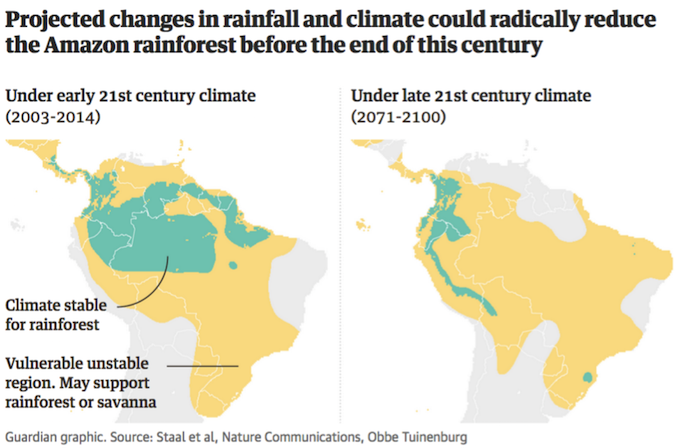
This year’s fires in the Amazon were the worst in a decade, 60% higher to last year…During last year’s fires, Brazil’s president, Jair Bolsonaro, was warned several times that this incessant destruction on the Amazon by loggers and ranchers will bring the rainforest closer to its tipping point, turning it into a savannah, the pleas clearly came to no avail.
Much of the Amazon is now scarily close to the verge of switching from a closed canopy rainforest to an open grassland/savannah. A recent study published in the Journal of Nature Communications highlights how close the Amazon is to reaching its tipping point. Through computer simulations they analyse the current rainfall trends, and fire destructions to see how much longer the rainforest’s resilience can last for.
“We understand now that rainforests on all continents are very sensitive to global change and can rapidly lose their ability to adapt. Once gone, their recovery will take many decades to return to their original state. And given that rainforests host the majority of all global species, all this will be forever lost.”—Ingo Fetzer of the Stockholm Resilience Centre, co-author of the paper
What is happening?
Forests create their own rain when their leaves give off water vapour, but as we lose areas of rainforest, we lose precious rain-making trees, losing the life support of the rainforest and entering a vicious loop in which the rainforest does not receive enough rainfall to maintain its cycle. Currently 40% of the Amazon rainforest is now at this point, in which it is not receiving the necessary amount of rainfall it needs to survive.

But if large areas of rainforest are lost, rainfall levels in the region decline accordingly. This reduced level of “atmospheric moisture recycling” was simulated in the computer models used in the study.—the Guardian
What happens if it does shift to a savannah?
Rainforests support more than 50% of land species, savannahs much much less—hundreds of thousands of species would die. Also rainforests play a much larger role in producing rain for its region and absorbing carbon dioxide from the atmosphere than savannahs, the global rain production would suffer accordingly, and the climate crisis would intensify.
“the ecology of rainforests meant that although they effectively produce their own self-sustaining rainfall in the right climate, they are also prone to drying out in the wrong conditions”.—Arie Staal, lead author of the study
Can the process be reversed?
Once the rainforest has crossed the threshold and has converted to an open savannah—a mix of wood and grassland—it is highly unlikely that it can revert naturally to its former state.
Why?
With an increase of greenhouse gas emissions, and a drier savannah-like landscape, the forest would not be able to recover and grow back, needing its rain producing support system that it has now lost. Also, a savannah ecosystem has a higher flammability, making it more susceptible to the spread of fires.
“It is harder to return from the ‘trap’ caused by the feedback mechanism in which the open, grassy ecosystem is more flammable, and the fires, in turn, keep the ecosystem open” —Ingo Fetzer of the Stockholm Resilience Centre
What can you do about it?
Join the Resistance and donate to our GoFundMe for ISA.
By: Isabella Cavalletti













